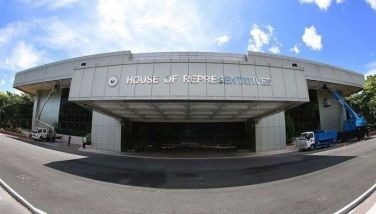BARMM turns to reforestation, waste management to prevent repeat of killer floods

CAGAYAN DE ORO, Philippines — The Bangsamoro government is counting on restoring denuded forests and conducting geohazard assessments after landslides and floods devastated parts of Mindanao.
The Bangsamoro Autonomous Region in Muslim Mindanao, which is rarely on the path of tropical cyclones that batter the country, was hit hard by landslides and floods brought by Severe Tropical Storm Paeng (international name: Nalgae) in October 2022.
The village of Kusiong, a Teduray relocation site in Datu Odin Sinsuat town in Maguindanao, was buried by an avalanche of huge rocks and mud from Mount Minandar.
Sixty-three people were killed across the region, while 11 remain missing. Officials estimate around one million were affected by the intense flooding.
"These are not just numbers. These are communities and individuals with their lives now changed because of the disaster," Bangsamoro’s environment minister Akmad Brahim said during a forum in Cagayan de Oro City on February 3.
Flooding in Mindanao 'increasing markedly'
According to a 2022 World Bank report, Luzon and Visayas are projected to become wetter, while Mindanao is forecast to become drier.
The report, however, noted that the number of flooding events has "increased markedly" in Mindanao over the last two decades, and may rise further due to climate change and more tropical cyclones passing through the southern part of the archipelago.
The Washington-based lender also said that while the annual rainfall in 2050 is forecast to decrease in central Mindanao, it will increase in western Mindanao.
“More devastating impacts of less frequent but high-intensity floods are expected in Mindanao,” the report read.
Reforestation to fight flood, climate change
Reforestation is one of the Bangsamoro government’s interventions to prevent severe flooding and reduce planet-warming greenhouse gas emission.
The MENRE has so far planted around 11.5 million seedlings in 10,401 hectares of land across the region. Its massive reforestation initiative called Integrated Bangsamoro Greening Program aims to grow 171.2 million trees or propagules covering 159,000 hectares of land.
Former Moro Islamic Liberation Front members and Bangsamoro Islamic Armed Forces combatants—now called “Palaw Rangers”—have been tapped to aid the government in monitoring and maintaining seedlings, and preventing illegal logging.
President Ferdinand "Bongbong" Marcos Jr. earlier blamed deforestation for the deadly landslides and flooding in BARMM as he urged authorities to make tree planting a major component of flood control projects.
Bangsamoro’s environment ministry earlier told Philstar.com that deforestation in the area was “primarily caused [by] timber licensing agreements awarded and other timber industries operating in Mindanao decades ago.”
Deforestation worsened during the dictatorship of Ferdinand Marcos Sr. as the Philippines became a major exporter of logs. Timber licensing agreements were also given to the relatives and cronies of Marcos Sr.
Kaingin or slash-and-burn and the conversion of forests into farmlands also drove forest loss in the area, the MENRE added.
The MENRE recently launched a greening program that targeted urban areas.
"Before, our reforestation program focused on the hinterlands. We’re now introducing it to our urban areas to increase the resiliency of urban areas against disasters aside from aesthetic value," MENRE Director General Badr Salendab said in an interview.
Geohazard assessment, solid waste management
To increase the resilience of Bangsamoro residents against climate disasters, Brahim said the environment ministry is conducting geohazard assessments and assisting local government units in including geohazard information in their disaster risk reduction plans.
According to the government’s geohazard assessment, the seaside village of Kusiong is a hazard-prone area that is susceptible to floods and landslides.
The local government is looking for potential settlements where Kusiong residents can be permanently relocated, Salendab said.
Salendab added that the Bangsamoro government is focusing on implementing a “holistic and sustainable” solid waste management program.
These programs are expected to be strengthened following the recent signing of a memorandum of understanding between the Bangsamoro government and the national government through the Department of Environment and Natural Resources. The agreement aims to enhance the region’s climate and disaster resilience as well as help achieve its sustainable development goals.
“One way to diminish the effects of natural disasters on this nation and its community is to invest more effort on enhancing our climate resilience and capacity to formulate and plan more,” Brahim said.
Community involvement
The World Bank said regions such as the BARMM are more vulnerable to the impacts of climate change than others due to their socio-economic conditions. The region has the highest level of poverty and the lowest coverage of water supply and sanitation services in the country.
Most of the region’s poor rely on subsistence-level farming for their livelihood and food—and agriculture is one of the sectors most affected by the climate crisis.
“Problems are exacerbated by low institutional capacity, a lack of data, uncertainty over access to nationally-funded programs, and fragmented emergency responses between BARMM ministries, provinces, and LGUs,” the World Bank report read.
Greenpeace Philippines stressed that addressing climate disaster risks needs to go beyond implementing needed projects such as reforestation and proper waste management.
“It needs to be embedded in governance approaches that are geared towards building and strengthening community resilience. This involves ensuring people participation in plans and programs, and looking at existing and developing new community initiatives and solutions,” Greenpeace country director Lea Guerrero said in an email response to Philstar.com.
“But beyond disaster and risk mitigation, communities in the Philippines should be actively involved in discussions about payment for loss and damage being experienced by communities, and should be calling actively for payment from governments and corporations most responsible for the climate crisis,” she added
-- This story was supported by Climate Tracker Asia and Earth Journalism Network
- Latest






























